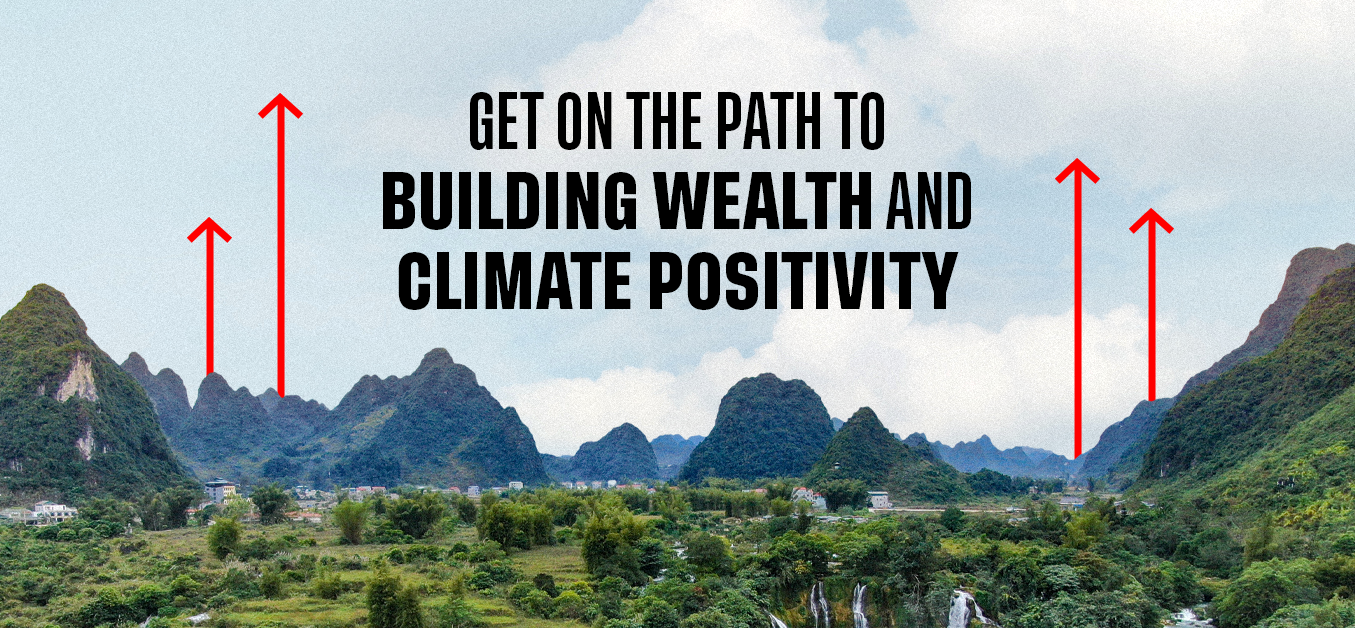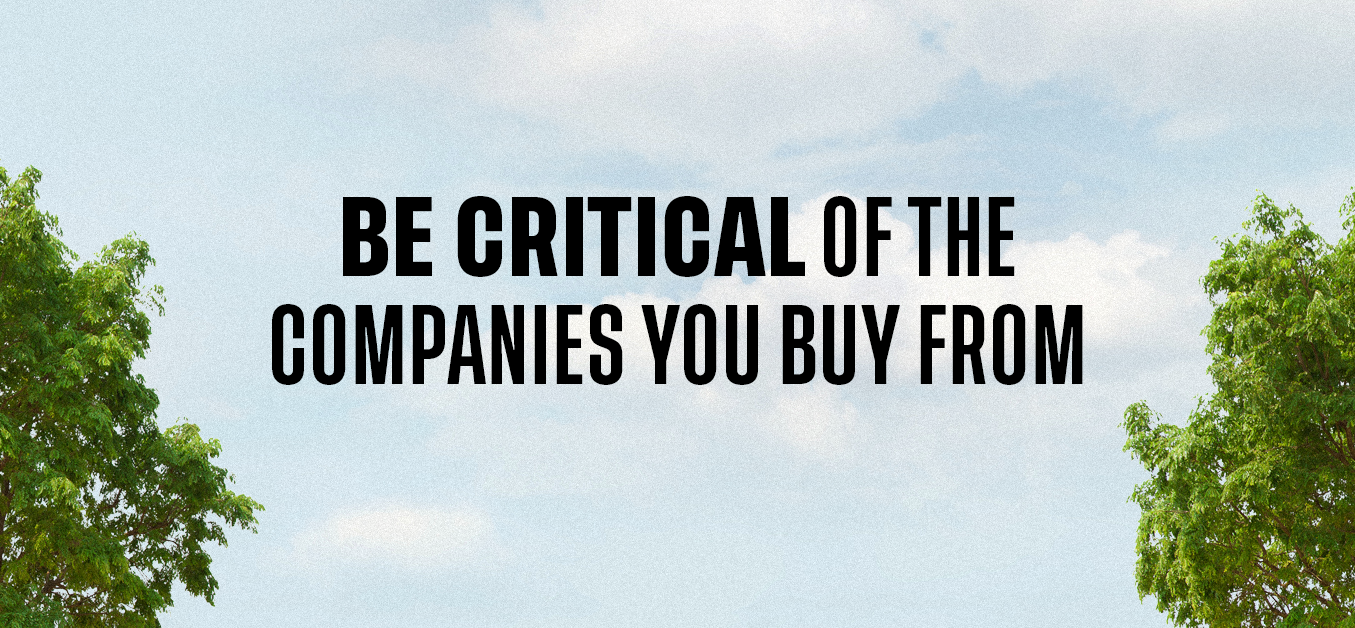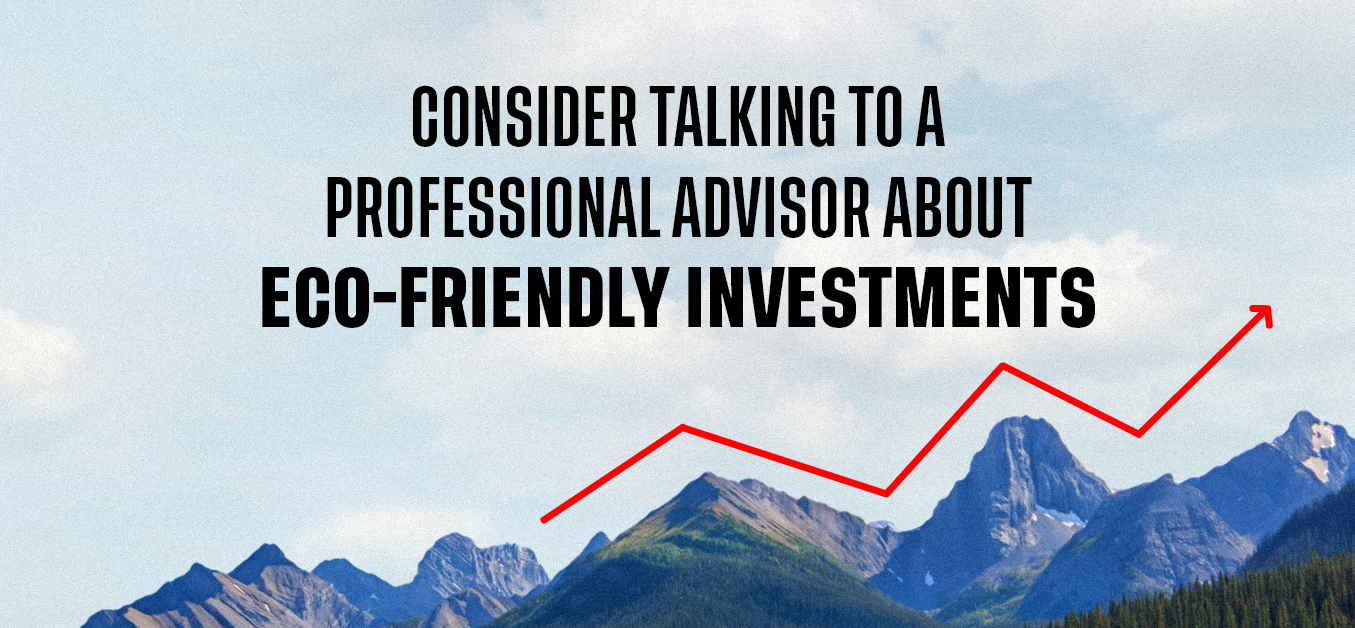Practical Tips to Save Money & The Planet
There’s more to living green than cutting out straws
We’ve all seen the lists. Those “53 Ways Going Green Saves You Money” types, you know the ones. You go into it with some optimism, but the tips are just things like “switch to metal straws” and “take your own bags to the grocery store”. Thanks, I guess?
Yeah, reusable bottles help—but surely, there’s more we could be doing to create bigger change.
For one, we’ve just launched Code Red Mode, a response to the climate emergency that makes it easy and free for you to plant a tree every time you tap your Mogo Visa* Platinum Prepaid Card. Our goal is to plant enough trees to make Canada—yep, the whole country—climate positive.
But there’s more to the fight against climate change than just your little MogoCard. Here’s a handful of ways you can have a meaningful impact on the health of the planet.
Build Wealth and Climate Positivity

To be clear, we believe governments, corporations and industries must take leading roles in the fight against climate change. That’s why we want to do our part as an organization, and invest in planting trees.
But individual consumers are not off the hook. According to researchers, approximately 72% of emissions that cause climate change can be linked back to household consumption.
No, you didn’t single handedly cause climate change by ordering something from Shein, or whatever. But en masse, the habits of consumers drive the manufacturing industry and its harmful habits.
In order to create real change, we all have to alter our personal habits. We all have a role to play if we want to secure our future. Luckily, there are ways you can also save some cash in the process.
Stop Ordering From Amazon

In 2020, Amazon’s CO2 emissions rose 19%. Their total output was equivalent to 60.64 million metric tons of carbon dioxide. That’s a massive amount of greenhouse gasses that one company belched into the atmosphere. You probably see where we’re going with this: Amazon is *not* the vibe if we’re keen to save the planet.
Amazon is a symptom of consumer demand and expectation, and it’s not the only company harming the planet in this way. When we demand millions of products delivered to our door the day after ordering, we’re contributing to this problem.
It’s important to note that for many people, Amazon is a lifeline. For people with limited mobility, for example, having food or household products delivered is absolutely critical to living a healthy life. Similarly, Amazon Basics provides affordable options for many people that may not be able to afford such products otherwise.
But as for the rest of y’all? Buying weird stuff on Amazon for a few bucks, just cuz you can? It’s time to get a new hobby.
Did you know that Amazon allegedly destroys products that it can’t sell? A recent investigation found 124,000 items labelled for destruction in a *single week* this April.
That means those products created emissions when they were manufactured, made further emissions when they were transported to the Amazon warehouse, and then were simply destroyed. Amazon donated only 28,000 items in that same period.
“I used to gasp. There’s no rhyme or reason to what gets destroyed: Dyson fans, Hoovers, the occasional MacBook and iPad; the other day, 20,000 Covid (face) masks still in their wrappers,” a former employee told the UK’s ITV News, as quoted in the above Verge article.
It’s time to stop consuming like it’s a hobby. These choices have an outsized impact on our planet. Take the money you would’ve spent on Amazon products and invest it, or use it to treat your BFF to a birthday dinner. Source products you need from local independent retailers instead.
We must stop justifying the actions of these companies by consuming at an unhinged pace. Personal responsibility matters.
Move to Eco-Friendly Investments

Where are you investing? Unless you specified that you preferred to invest in exclusively green portfolios, there’s a chance your investment dollars could be bolstering oil and gas industries.
Socially Responsible Investment portfolios include companies that meet certain environmental, social, and governance standards. Basically, they prove that they’re good for the planet, good for their employees (and all humans), and that through solid governance, they’re built to last (read: probably profitable).
Take a moment to call up your financial advisor, check up on your robo-advisor or reach out to our friends at Moka and make your wishes known. Moka offers fully-managed SRI portfolios for a flat monthly fee of only $3. You can help build your wealth by supporting the companies and industries you believe in.
Build a Capsule Wardrobe

Say goodbye to fast fashion. Rather than buying a new seasonal wardrobe every time the weather changes from cheap companies like AliExpress, invest in building a thoughtful capsule wardrobe.
A capsule wardrobe is a small collection of high quality clothing and accessories that will stay with you for years. These are made of timeless, well fitting items that you can return to over and over again. Think well made coats, comfortable (and repairable!) shoes, and a great pair of 100% cotton denim jeans from a sustainable company.
Your capsule wardrobe will cost you up front—because quality products come with a higher price tag—but they’ll last, and you could save money in the long run.
Building a capsule wardrobe is a fun exercise, too. It’s a great experience to slowly acquire pieces you’ll wear for years, donate clothes you don’t need anymore, and watch your savings grow every time you forgo the newest TikTok leggings.
This can both save you money and contribute to a healthier planet, because you’re not contributing to harmful manufacturing cycles or emissions associated with apparel transportation.
Plan Your Meals

Food waste is a huge, embarrassing problem.
We get it. You’re busy. You work a lot. We do too. We know it can be really tough to set aside time to plan meals, do a big, methodical grocery shop, and batch make the food you’ll eat for the week. But it’s truly the best way to nourish yourself, save cash, and save the planet.
By planning your meals, you’re less likely to let food go to waste because everything you’ve recently purchased has a purpose. Going meatless is a great way to save money and support the environment, as meat production is associated with massive greenhouse gas emissions and water wastage, but we’re not gonna tell ya what to do! If you’re a hardened meat eater, just consider buying from your local butcher instead of the supermarket.
Set aside a few hours every weekend to make a big pot of tasty chilli, chana masala, or stew. Or just prepare the ingredients you’ll use throughout the week: pre-roast your sesame seeds, marinade your salmon and toss it back in the fridge, or process your veg ahead of time to make weeknight dinners a breeze.
Being this prepared is also an incredibly satisfying way to eat. Go you. So on top of things!
Call Your Elected Representatives

It’s also important to pressure the politicians elected to represent us. Call ‘em up, and say:
My name is [Jimothy or whatever your name is], and I’m one of your constituents. What are you doing to fight climate change?
If they waffle, tell ‘em:
Mate, if you don’t get it together, I’m not gonna vote for you in the next election. Healing our planet is important to me and my neighbours. Figure it out or we’re taking our votes elsewhere!
You might be thinking, this won’t save me money! But oh, it will. When in 15 years your basement is flooding every year because of new extreme weather patterns, friend, it will cost you. Get ahead of the trouble now and help fortify your community against the effects of climate change.
Use Your MogoCard

The MogoCard can also help save you money. According to a recent Mogo survey of active MogoCard users, some respondents reported an average monthly savings of $201, and 91% of active card users agreed that the MogoCard gave them greater spend control.3
There are lots of ways you can contribute to a healthier planet, and we’re here to help you succeed. Sign up for your free MogoCard today, and let’s make a difference together.
| GET MY FREE MOGOCARD |
This blog is provided for informational purposes only, isn’t intended as investment advice and isn’t meant to suggest that a particular investment or strategy is suitable for any particular investor. If you’re unsure about an investment, you may wish to obtain investment advice from a qualified professional. Mogo Finance Technology Inc. is an affiliate of Moka Financial Technologies Inc.
*Trademark of Visa International Service Association and used under licence by Peoples Trust Company. Mogo Visa Platinum Prepaid Card is issued by Peoples Trust Company pursuant to licence by Visa Int. and is subject to Terms and Conditions, visit mogo.ca for full details. Your MogoCard balance is not insured by the Canada Deposit Insurance Corporation (CDIC). MogoCard means the Mogo Visa Platinum Prepaid Card.
1-According to research conducted by Veritree Technology Inc. 500 lbs. is an approximate amount based on Above-Ground-Carbon (AGC) and Below Ground Carbon (BGC) sequestration estimates contained in several scientific research papers regarding the carbon sequestration of Mangrove trees (the “Research”). The Research contains various ranges for the rate of carbon sequestration per hectare of land. In order to arrive at the approximate amount of 500 lbs., Veritree triangulated data points from the Research regarding AGC and BGC sequestration estimates, and then converted those results into the approximate amount of lbs. per tree.
2-An average Canadian emits approximately 42,000 lbs of CO2 in one year. Each tree will absorb approximately 500lbs of CO2 over its lifetime (approximately 25 years). For every purchase made with the MogoCard, a tree will be planted. If you used your MogoCard for 10 purchases each month, 10 trees would be planted. If 10 trees were planted every month for a year, that would be 120 trees, and those 120 trees would absorb a combined total of 60,000 lbs of CO2 over their lifetimes (25 years), making the average Canadian climate positive. Learn more: We're In Code Red Mode
3-Based on an online survey of active MogoCard users by Mogo Inc. conducted between July 13, 2021 and July 16, 2021, with 1,446 respondents to a combination of multiple choice and fillable text box questions. 91% of respondents agreed that the MogoCard can help them better control their spending. 66.5% of respondents reported that they were spending less on discretionary spending now that they were using the MogoCard, with respondents reporting that they believed to have an average savings of $201 per month (based on 902 respondents who specified an amount and excluding 60 respondents who did not specify any amount).